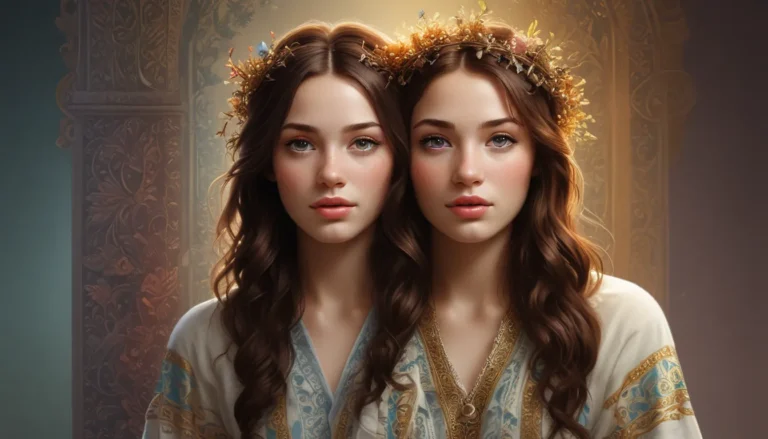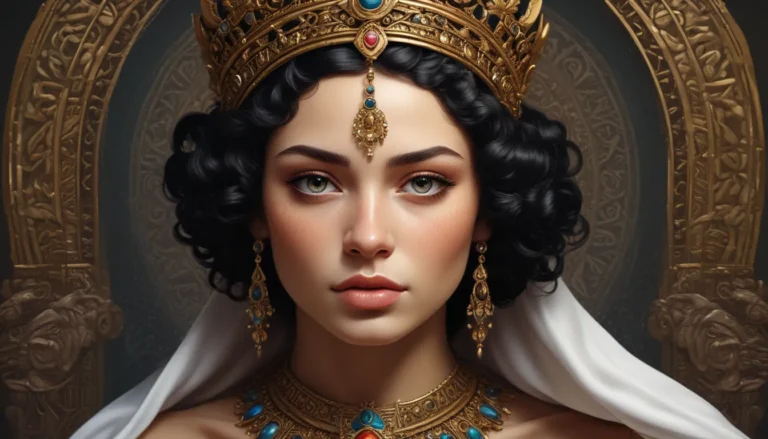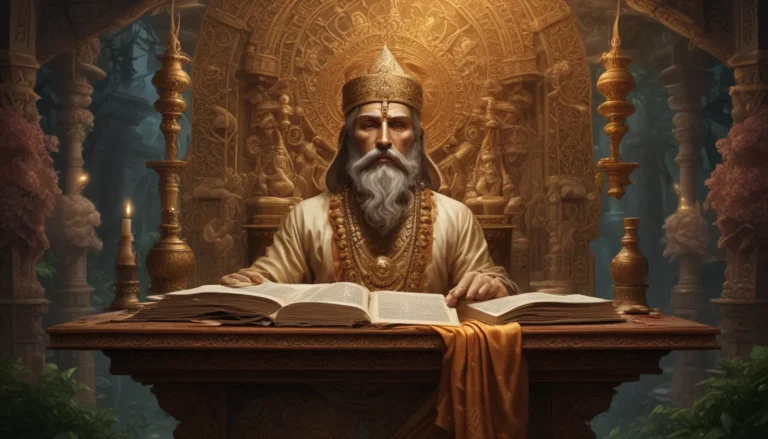The images in our articles may not match the content exactly. They are used to grab your attention, not to show the exact details in the text. The images complement the text but do not replace it.
Welcome to the intriguing realm of Asatru, a modern revival of the ancient Norse pagan religion that has captivated the hearts and minds of individuals seeking a deeper spiritual connection. In this article, we will uncover 15 fascinating facts about Asatru, shedding light on its history, beliefs, and practices. Whether you are new to Asatru or simply curious about this ancient religion, prepare to embark on a journey of discovery into the vibrant world of Asatru and the community of individuals who embrace its teachings.
Unveiling the Mysteries of Asatru
Asatru: An Ancient Norse Pagan Religion
Asatru, also known as Heathenry, represents a contemporary revival of the ancient Norse religious practices that were followed by the Vikings and other Germanic tribes. This spiritual path focuses on the worship of Norse gods and goddesses such as Odin, Thor, Freya, and Loki, embodying a deep connection to the rich tapestry of Norse mythology.
Embracing the Pantheon of Deities
Asatru is a polytheistic religion that recognizes and worships a diverse pantheon of gods and goddesses, each embodying unique attributes and powers. This belief system allows for a rich tapestry of religious practices, rituals, and mythologies that celebrate the intricate interplay between mortals and divinity.
The Sanctity of Nature in Asatru
Central to Asatru is the profound reverence for the natural world and its intrinsic harmony with humanity. Followers of Asatru engage in nature-based rituals, seeking to maintain a harmonious relationship with the land, animals, and plants that embody the sacred essence of the Earth.
Ancestral Roots of Asatru
The origins of Asatru can be traced back to the pre-Christian beliefs and practices of the Germanic tribes that roamed Northern Europe, including the formidable Vikings. These ancient traditions were revitalized and adapted by modern practitioners, breathing new life into the spiritual legacy of their forebears.
The Eddas: Pillars of Asatru
At the heart of Asatru lie the Eddas, ancient Norse texts brimming with myths, legends, and poems that illuminate the tales of gods and heroes dear to Asatru practitioners. These texts serve as a wellspring of inspiration and guidance, providing a sacred repository of knowledge for those who walk the path of Asatru.
Rituals of Reverence: Blót and Sumbel
Asatru rituals often encompass solemn ceremonies known as blót, where offerings are made to the gods through the sacrifice of animals or libations. Additionally, sumbel, a ceremonial drinking rite, allows participants to toast and share stories in honor of the gods and ancestral spirits, forging a bond between the mortal and divine realms.
Embracing Values and Traditions in Asatru
Ancestral Reverence and Guidance
A cornerstone of Asatru is the veneration of one’s ancestors, seeking their guidance and wisdom to navigate life’s challenges. Ancestor worship serves as a poignant reminder of one’s lineage and heritage, fostering a profound connection to the past that shapes the present.
Virtues of Honor and Integrity
Asatru upholds a code of virtues encompassing courage, honesty, loyalty, and hospitality, emphasizing the importance of embodying these qualities in daily interactions and relationships. By adhering to these noble ideals, followers of Asatru aspire to cultivate a life marked by honor and integrity.
Kinship and Community in Asatru
The Asatru community espouses a strong sense of kinship, forging close bonds within tight-knit communities that prioritize the values of family, friendship, and mutual support. These relationships serve as pillars of strength, nurturing the spiritual growth and collective wellbeing of practitioners on their respective journeys.
Gender Equality in Asatru
In stark contrast to some traditional belief systems, Asatru places equal reverence on male and female deities, granting women prominent roles within the religion since ancient times. This commitment to gender equality underscores Asatru’s inclusive ethos, welcoming individuals of all genders to partake in its spiritual traditions.
Symbols and Resurgence of Asatru
The Mighty Hammer of Thor
A symbol synonymous with Asatru is the Mjolnir, most commonly known as Thor’s hammer. This powerful emblem represents strength, protection, and the divine authority of the Norse gods, embodying the spiritual fortitude and guardianship that resonate deeply within the Asatru community.
Revival and Expansion of Asatru
In recent decades, Asatru has experienced a resurgence among individuals seeking to reclaim their Norse heritage and explore alternative spiritual paths beyond mainstream religions. This revival has fostered the formation of Asatru organizations and communities worldwide, fostering a vibrant tapestry of spiritual practices and beliefs.
Nurturing Individual Growth in Asatru
Autonomy and Diversity of Beliefs
Asatru is a decentralized religion that grants individual practitioners and local kindreds autonomy in their beliefs and practices. This freedom allows for diverse interpretations and expressions of faith, fostering a rich tapestry of spiritual exploration within the Asatru community.
Seasonal Celebrations and Sacred Festivals
Central to Asatru are the seasonal festivals known as “blóts,” marking significant milestones in the agricultural cycle while honoring the gods and goddesses associated with each season. These sacred festivals serve as occasions for communal celebration, reflection, and spiritual renewal within the Asatru tradition.
Embarking on a Journey of Self-Discovery
Unveiling the Path of Asatru
Asatru invites individuals to embark on a personal journey of self-discovery, seeking wisdom and enlightenment through direct experiences and introspective exploration. This emphasis on individual growth and spiritual evolution forms the bedrock of Asatru, empowering practitioners to forge their unique paths toward enlightenment.
Conclusion: Delving Deeper into Asatru
As we conclude our exploration of Asatru and its myriad facets, we have unveiled a realm rich in history, tradition, and spiritual reverence. From its ancient roots in Norse paganism to its modern resurgence in global communities, Asatru stands as a testament to the enduring legacy of the Norse gods and the indomitable spirit of those who embrace its teachings.
Whether you are a curious seeker or a seasoned practitioner, the 15 facts revealed in this article offer a foundational understanding of Asatru’s beliefs, practices, and cultural significance. As you continue to explore the depths of Asatru and its vibrant community, may you find inspiration, wisdom, and spiritual nourishment along your journey of self-discovery and enlightenment.
Frequently Asked Questions (FAQs)
-
What is Asatru?
Asatru is a modern-day revival of the ancient Germanic paganism and Norse mythology, focusing on the worship of Norse gods and goddesses like Odin, Thor, and Freya. -
Are there any rituals in Asatru?
Yes, Asatru practitioners engage in various rituals and ceremonies, including blóts, sumbels, and seasonal celebrations known as blótstides. -
Who can practice Asatru?
Asatru welcomes individuals of all backgrounds and ethnicities who resonate with its beliefs and values, inviting them to honor the Norse gods and connect with their ancestral heritage. -
What are the core beliefs of Asatru?
The core beliefs of Asatru encompass honoring the Norse gods, fostering a connection with nature, valuing individual responsibility, and embracing the concept of frith (peaceful relationships). -
How can one learn more about Asatru?
To delve deeper into Asatru, consider reading books on Norse mythology, connecting with local Asatru groups, and engaging in personal research to expand your knowledge and spiritual understanding. -
Is Asatru associated with any specific ethnicity?
While Asatru has historical ties to Germanic and Scandinavian cultures, it embraces individuals from diverse backgrounds who resonate with its spiritual teachings and customs, transcending boundaries of ethnicity. -
Are there any sacred texts in Asatru?
Asatru does not have a single sacred text, but the Poetic Edda and the Prose Edda, written in the 13th century, are considered invaluable sources of Norse mythology and lore, guiding practitioners on their spiritual journeys.
In closing, may your exploration of Asatru illuminate your path, enrich your spirit, and deepen your connection to the ancient wisdom and timeless traditions that define this fascinating religion. As you continue your journey of discovery, may the essence of Asatru guide you toward greater insights, connection, and enlightenment.






